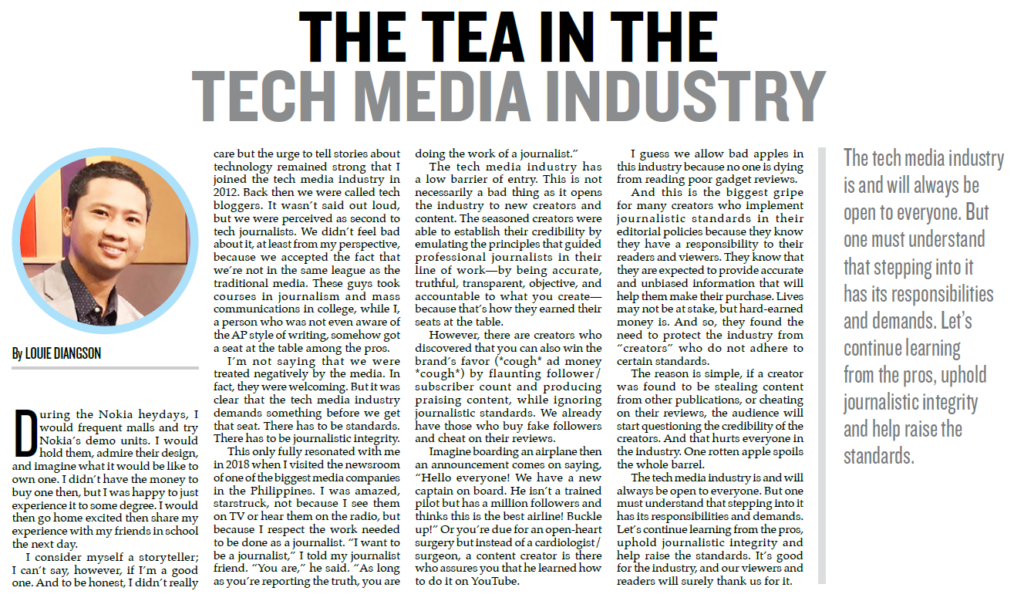During the Nokia heydays, I would frequent malls and try Nokia’s demo units. I would hold them, admire their design, and imagine what it would be like to own one. I didn’t have the money to buy one then but I was happy to just experience it to some degree. Then I would go home excited then share my experience with my friends in school the next day.
I consider myself a storyteller. I can’t say if I’m a good one. And to be honest, I didn’t really care but the urge to tell stories about technology remained strong that I joined the tech media industry in 2012. Back then we were called tech bloggers. It wasn’t said out loud, but we were perceived as second to tech journalists. We didn’t feel bad about it, at least from my perspective, because we accepted the fact that we’re not in the same league as the traditional media. These guys took courses in journalism and mass communications in college, while I, a person who was not even aware of the AP style of writing, somehow got a seat at the table among the pros.
I’m not saying that we were treated negatively by the media. In fact, they were welcoming. But it was clear that the tech media industry demands something before we get that seat. There has to be standards. There has to be journalistic integrity.
This only fully resonated with me in 2018 when I visited the newsroom of one of the biggest media companies in the Philippines. I was amazed, starstruck, not because I see them on TV or hear them on the radio, but because I respect the work needed to be done to be a journalist. “I want to be a journalist,” I told my journalist friend. “You are,” he said. “As long as you’re reporting the truth, you are doing the work of a journalist.”
The tech media industry has a low barrier of entry. This is not necessarily a bad thing as it opens the industry to new creators and content. The seasoned creators were able to establish their credibility by emulating the principles that guided professional journalists in their line of work (by being accurate, truthful, transparent, objective, and accountable to what you create) because that’s how they earned their seats at the table.
However, there are creators who discovered that you can also win the brand’s favor (*cough* ad money *cough*) by flaunting followers/subscribers count and producing praising content, while ignoring journalistic standards. We already have those who buy fake followers and cheat on their reviews.
Imagine boarding the airplane then an announcement comes on saying, “Hello everyone! We have a new captain on board. He isn’t a trained pilot but has a million followers and thinks this is the best airline! Buckle up!” Or you’re due for an open-heart surgery but instead of the surgeon, a content creator is there who assures you that he learned how to do it on YouTube.
I guess we allow bad apples in this industry because no one is dying from reading poor gadget reviews.
And this is the biggest gripe for many creators who implement journalistic standards in their editorial policies because they know they have a responsibility to their readers and viewers. They know that they are expected to provide accurate and unbiased information that will help them make their purchase. Lives may not be at stake, but hard-earned money is. And so they found the need to protect the industry from “creators” who do not adhere to certain standards.
The reason is simple, if a creator was found to be stealing content from other publications, or cheating on their reviews, the audience will start questioning the credibility of the creators. And that hurts everyone in the industry. One rotten apple spoils the whole barrel.
The tech media industry is and will always be open to everyone. But one has to understand that stepping into it has its responsibilities and demands. Let’s continue learning from the pros, uphold journalistic integrity and help raise the standards. It’s good for the industry, and our viewers and readers will surely thank us for it.


